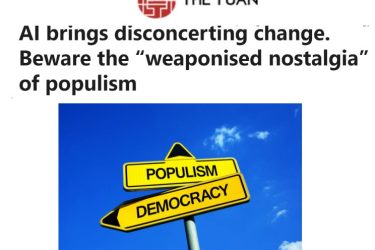The first in what may or may not become a series of un-forecasts*, little glimpses of what may lie ahead in the century of two singularities.
It’s 2025 and self-driving trucks, buses, taxis and delivery vans are the norm. Almost all of America’s five million professional drivers are out of work. They used to earn white-collar salaries for their blue-collar work, which means it is now virtually impossible for them to earn similar incomes. A small minority have re-trained and become coders, or virtual reality architects or something, but most are on welfare, and / or earning much smaller incomes in the gig economy. And they are angry.
The federal government, fearful of social unrest (or at least disastrous electoral results), steps in to replace 80% of their income, guaranteed for two years. This calms the drivers’ anger, but other people on welfare are protesting, demanding to know why their benefit levels are so much lower.
Meanwhile, many thousands of the country’s 1.3m lawyers are being laid off. And their salaries were much higher. The government knows it cannot fund 80% replacement of those incomes, but the lawyers are a vociferous bunch.
And there are doctors, journalists, warehouse managers, grocery store workers…
* This un-forecast is not a prediction. Predictions are almost always wrong, so we can be sure that the future will not turn out exactly like this. It is intended to make the abstract notion of technological unemployment more real, and to contribute to scenario planning. Failing to plan is planning to fail: if you have a plan, you may not achieve it, but if you have no plan, you most certainly won’t. In a complex environment, scenario development is a valuable part of the planning process. Thinking through how we would respond to a sufficient number of carefully thought-out scenarios could well help us to react more quickly when we see the beginnings of what we believe to be a dangerous trend.


